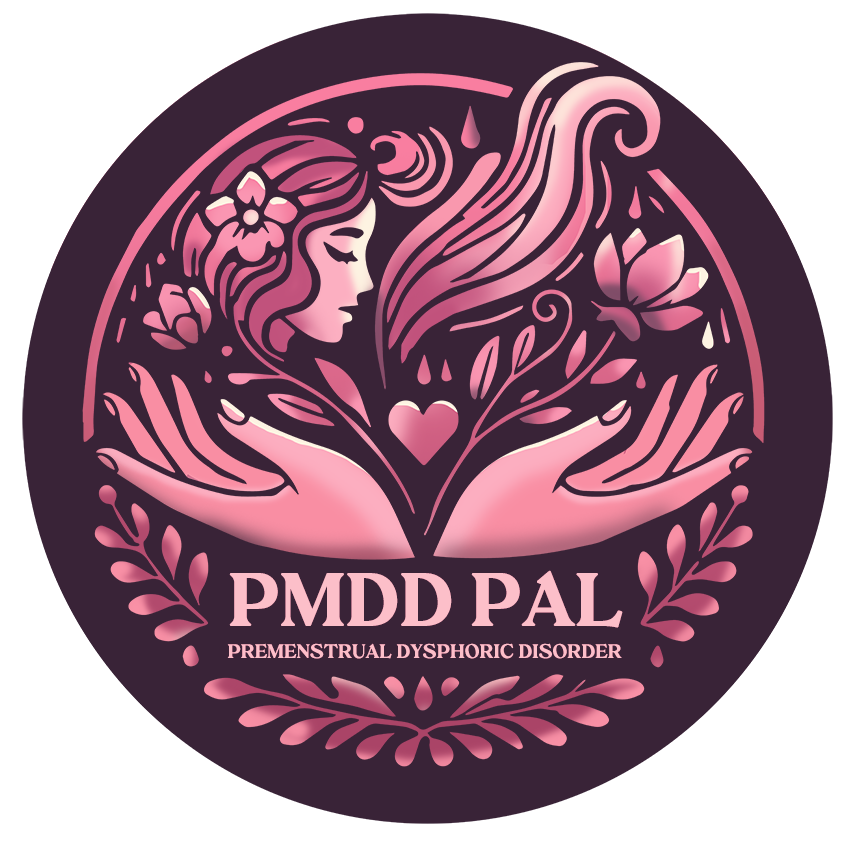WHAT IS PMDD?
PMDD can affect any women or individual Assigned Female At Birth (AFAB) during their menstruating years, typically 12-45 years of age. It is estimated that as many as 5-8% of girls and women in the United Kingdom are experiencing PMDD, equivalent to 800,000 individuals at any given time (IAPMD, 2022).
PMDD was not officially listed as a mental health disorder within the Diagnostic and Statistical Manual of Mental Disorders (DSM-5) until 2013, which is their most recent publication. [The DSM-5 is a handbook used by health and medical professionals which outlines the diagnostic criteria for mental health difficulties and disorders].
Before this, the condition was named but not officially recognised as ‘premenstrual syndrome’, followed later by ‘Late Luteal Phase Dysphoric Disorder’ (LLPDD). LLPDD consequently spent many years after this in the DSM section entitled ‘conditions deserving further study’, particularly in the DSM-IIIR (1987), until finding its current resting place under ‘depressive disorders’ in the DSM- 5 (2013). The condition is now referred to as PMDD, but older and previous pieces research and media (pre-2013) may refer to PMDD as PMS or LLPDD.
Below is the current DSM-5 diagnostic criteria for PMDD:
A. In the majority of menstrual cycles, at least five symptoms must be present in the final week before the onset of menses, start to improve within a few days after the onset of menses, and become minimal or absent in the week post menses.
B. One (or more) or the following symptoms must be present:
1. Marked affective lability (e.g., mood swings; feeling suddenly sad or tearful, or increased sensitivity to rejection)
2. Marked irritability or anger or increased interpersonal conflicts.
3. Marked depressed mood, feelings of hopelessness, or self-depreciating thoughts.
4. Marked anxiety, tension, and / or feelings of being keyed up or on edge.
C. One (or more) of the following symptoms must additionally be present, to reach a total of five symptoms when combined with symptoms from Criterion B above.
1. Decreased interest in usual activities (e.g., work, school, friends, hobbies).
2. Subjective difficulty in concentration.
3. Lethargy, easy fatigability, or marked lack of energy.
4. Marked change in appetite; overeating; or specific food cravings.
5. Hypersomnia or insomnia.
6. A sense of being overwhelmed or out of control.
7. Physical symptoms such as breast tenderness or swelling, joint or muscle pain, a sensation or ‘bloating’, or weight gain.
Note: The symptoms in Criteria A-C must have been met for most menstrual cycles that occurred in the preceding year.
Recording Procedures
If symptoms have not been confirmed by prospective daily ratings of at least two symptomatic cycles, “provisional” should be noted after the name of the diagnosis.
The above symptoms and criteria are mainly experienced during the Luteal Phase of a female’s menstrual cycle which begins roughly one week before menstruation starts and symptoms rapidly subside as soon as bleeding starts or a couple of days after this point. The disorder impacts behaviour and interaction, emotion/ feelings, psychology and bodily sensations / physiology. It can be extremely impactful on many areas in life, e.g., work, school, social activities and relationships (Hantsoo and Epperson, 2015).
Symptoms of PMDD
PMDD symptoms are more intense than those of PMS and can include:
-
Emotional Symptoms:
- Severe depression or feelings of hopelessness
- Intense anxiety or tension
- Extreme irritability or anger
- Mood swings, often with sudden crying spells
- Feelings of being overwhelmed or out of control
- Difficulty concentrating
- Decreased interest in daily activities and relationships
-
Physical Symptoms:
- Fatigue or low energy
- Sleep disturbances (insomnia or excessive sleep)
- Changes in appetite, including food cravings or overeating
- Breast tenderness or swelling
- Headaches
- Joint or muscle pain
- Bloating or weight gain
Causes and Risk Factors
The exact cause of PMDD is not fully understood, but it is believed to be related to the hormonal changes that occur during the menstrual cycle. These hormonal fluctuations may affect neurotransmitters like serotonin, which plays a key role in mood regulation. Women with a history of depression, anxiety, or other mood disorders are at higher risk of developing PMDD. There may also be a genetic component, as PMDD can run in families.
Impact on Women’s Lives
PMDD can have a profound impact on a woman’s quality of life. The severity of the emotional and physical symptoms can lead to difficulties in work, school, and relationships. Women with PMDD may feel isolated or misunderstood, as the condition is often misdiagnosed or dismissed as “just PMS.” In some cases, the emotional symptoms are so severe that they can lead to suicidal thoughts or actions, making it a potentially life-threatening condition if left untreated.
Treatment and Management
Treatment for PMDD often involves a combination of lifestyle changes, medication, and therapy:
- Lifestyle Changes: Regular exercise, a healthy diet, adequate sleep, and stress management techniques can help alleviate some symptoms.
- Medications: Antidepressants, particularly selective serotonin reuptake inhibitors (SSRIs), are commonly prescribed to manage the mood symptoms of PMDD. Hormonal treatments, such as birth control pills, may also be used to regulate or suppress the menstrual cycle.
- Therapy: Cognitive-behavioral therapy (CBT) can help women develop coping strategies for dealing with the emotional aspects of PMDD.
- Supplements: Some women find relief with supplements such as calcium, magnesium, or vitamin B6, though these should be used under a doctor’s supervision.
Conclusion
PMDD is a serious condition that requires medical attention and understanding. With proper diagnosis and treatment, women with PMDD can manage their symptoms and lead fulfilling lives. However, raising awareness about the condition is crucial to ensure that women receive the support and care they need and deserve. This is what PMDD Pal aims to achieve and this is the centre of our ethos.



